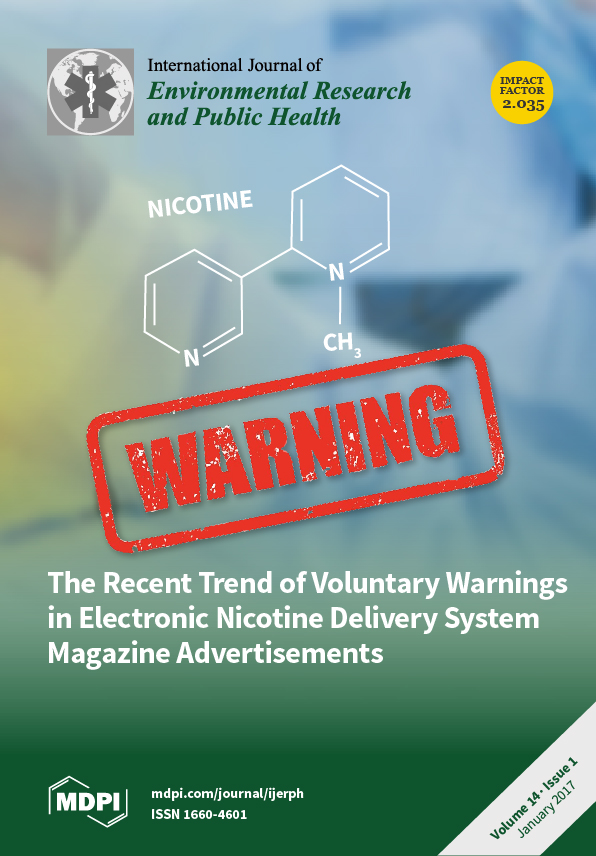Hearing impairment may affect children’s communication skills, social development, and educational achievement. Little is known about the prevalence of hearing impairment among Chinese children. Data were taken from the 2006 second China National Survey on Disability (CNSD). Hearing impairment was defined as moderate
[...] Read more.
Hearing impairment may affect children’s communication skills, social development, and educational achievement. Little is known about the prevalence of hearing impairment among Chinese children. Data were taken from the 2006 second China National Survey on Disability (CNSD). Hearing impairment was defined as moderate (41–60 dB HL), severe (61–80 dB HL), profound (81–90 dB HL), or complete (>91 dB HL). Logistic regression was used to estimate the odds ratio (OR) and 95% confidence intervals (CI). A weighted number of 567,915 hearing impairment children were identified, yielding a prevalence of 17.49 per 10,000 people (95% CI: 16.90–18.08), with prevention or treatment options possible for 64.6% of hearing impairment children. The main causes of hearing impairment were hereditary, tympanitis, and drug intoxication. Illiteracy in one or both parents (mother: OR = 1.388, 95% CI: 1.125–1.714,
p < 0.0001; father: OR = 1.537, 95% CI: 1.152–2.049,
p < 0.0001 relative to no school or primary school), annual family income lower than national average (OR = 1.323, 95% CI: 1.044–1.675,
p = 0.0203, relative to higher than national average), household size larger than three people (OR = 1.432, 95% CI: 1.164–1.762,
p = 0.0007, relative to smaller than three people) and single-mother family (OR = 2.056, 95% CI: 1.390–3.042,
p = 0.0176, relative to intact family) were the independence risk factors for hearing impairment among Chinese children. Lower annual family income, male children, larger household size, single-mother family, and lower levels of maternal and paternal education were independent risk factors for hearing impairment for Chinese children. Further studies on hearing impairment prevention and the relationship between parental social factors and the risk of hearing impairment are needed.
Full article





